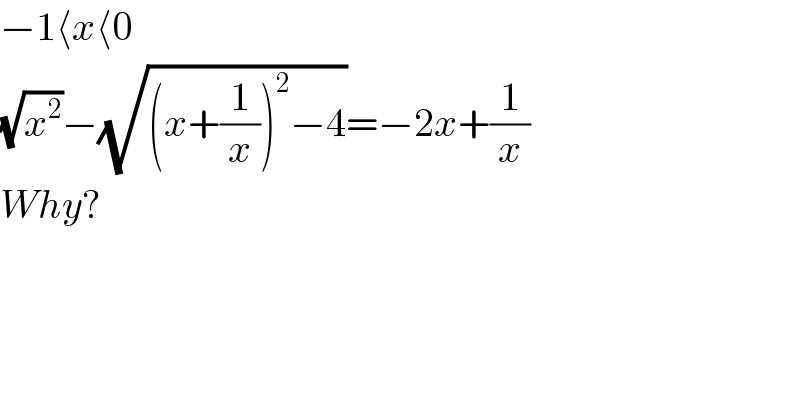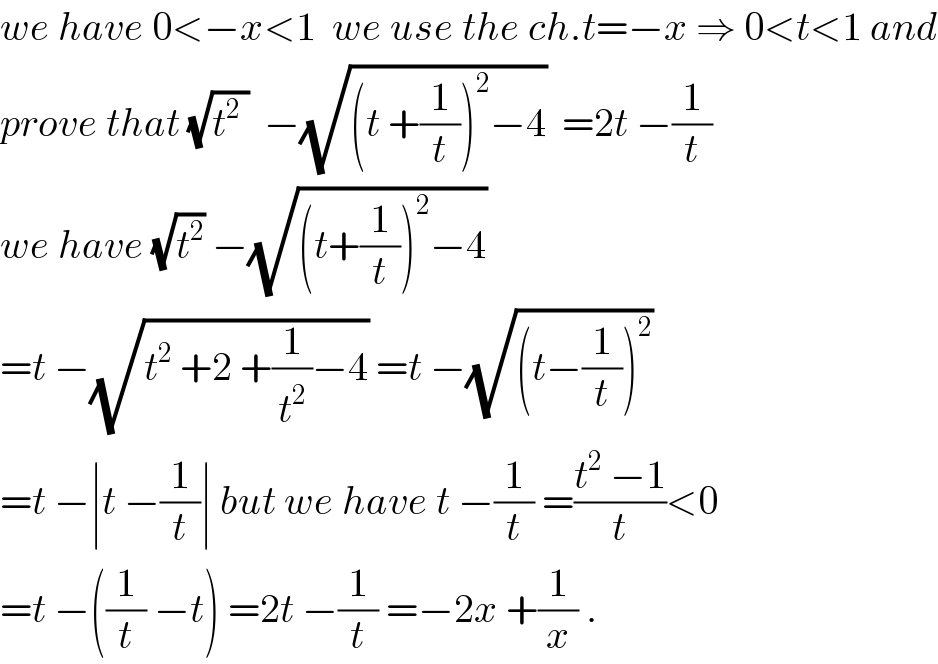
Question and Answers Forum
Question Number 32371 by .none. last updated on 24/Mar/18

Commented by abdo imad last updated on 25/Mar/18

Answered by MJS last updated on 24/Mar/18
![I. (√x^2 )=−x with x<0 [i.e. (√((−2)^2 ))=(√4)=2] II. (√((x+(1/x))^2 −4))= [x≠0] =(√(x^2 +2+(1/x^2 )−4)) =(√(x^2 −2+(1/x^2 )))=(√((x−(1/x))^2 ))= =(x−(1/x)) with −1<x<0 [−1<x<0 ⇒ ∣x∣<1 ⇒ ∣(1/x)∣>1 ⇒ ⇒(x−(1/x))>0; i.e. −(1/2)−(1/(−(1/2)))= =−(1/2)+2=(3/2)] I.−II. −x−(x−(1/x))=−2x+(1/x)](Q32373.png)
Answered by $@ty@m last updated on 24/Mar/18

| ||
Question and Answers Forum | ||
Question Number 32371 by .none. last updated on 24/Mar/18 | ||
 | ||
Commented by abdo imad last updated on 25/Mar/18 | ||
 | ||
Answered by MJS last updated on 24/Mar/18 | ||
![I. (√x^2 )=−x with x<0 [i.e. (√((−2)^2 ))=(√4)=2] II. (√((x+(1/x))^2 −4))= [x≠0] =(√(x^2 +2+(1/x^2 )−4)) =(√(x^2 −2+(1/x^2 )))=(√((x−(1/x))^2 ))= =(x−(1/x)) with −1<x<0 [−1<x<0 ⇒ ∣x∣<1 ⇒ ∣(1/x)∣>1 ⇒ ⇒(x−(1/x))>0; i.e. −(1/2)−(1/(−(1/2)))= =−(1/2)+2=(3/2)] I.−II. −x−(x−(1/x))=−2x+(1/x)](Q32373.png) | ||
| ||
Answered by $@ty@m last updated on 24/Mar/18 | ||
 | ||
| ||